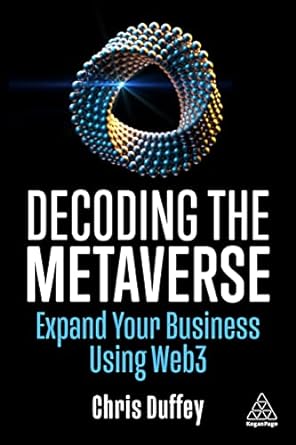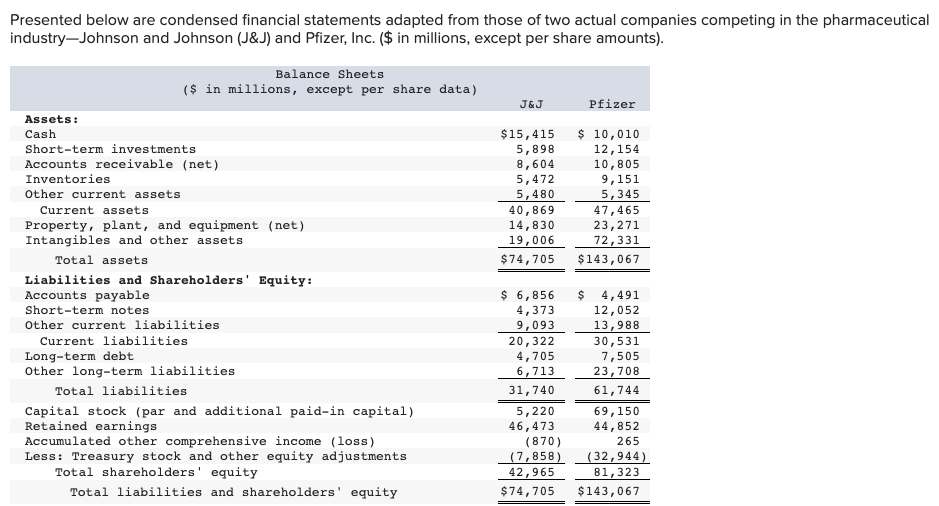
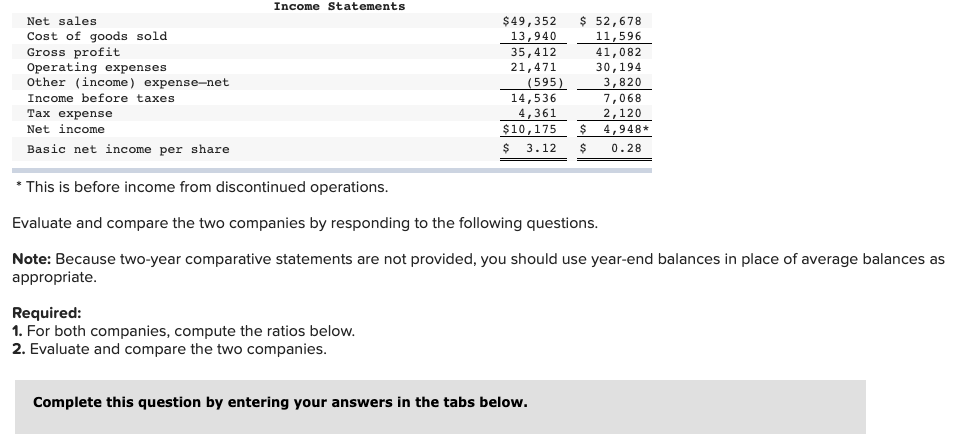
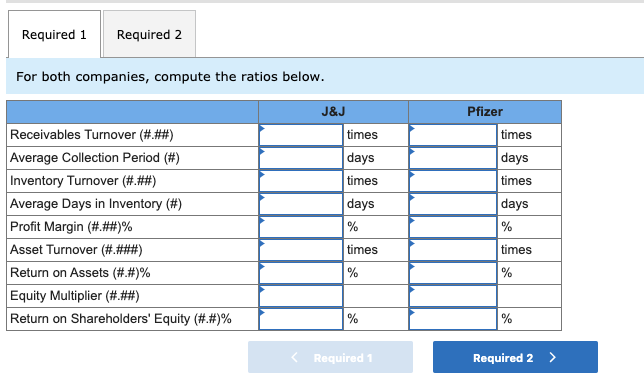
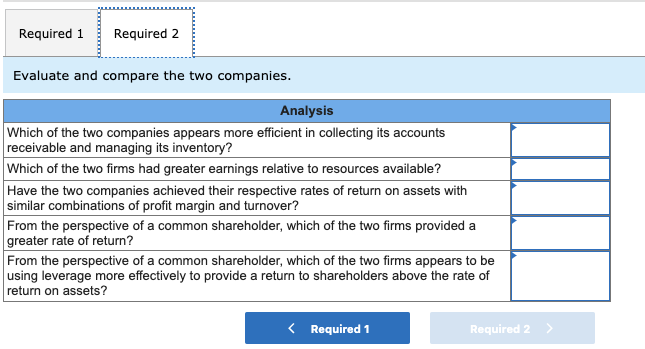
Presented below are condensed financial statements adapted from those of two actual companies competing in the pharmaceutical industry-Johnson and Johnson (J&J) and Pfizer, Inc. ($ in millions, except per share amounts). Balance Sheets ($ in millions, except per share data) J&J Pfizer $15, 415 5,898 8,604 5, 472 5,480 40,869 14,830 19,006 $ 74, 705 $ 10,010 12,154 10,805 9,151 5, 345 47,465 23,271 72,331 $143,067 Assets: Cash Short-term investments Accounts receivable (net) Inventories Other current assets Current assets Property, plant, and equipment (net) Intangibles and other assets Total assets Liabilities and Shareholders' Equity: Accounts payable Short-term notes Other current liabilities Current liabilities Long-term debt Other long-term liabilities Total liabilities Capital stock (par and additional paid-in capital) Retained earnings Accumulated other comprehensive income (loss) Less: Treasury stock and other equity adjustments Total shareholders' equity Total liabilities and shareholders' equity $ 6,856 4,373 9,093 20, 322 4,705 6,713 31,740 5,220 46, 473 (870) (7,858) 42,965 $ 74, 705 $ 4,491 12,052 13,988 30,531 7,505 23, 708 61,744 69, 150 44,852 265 (32,944) 81,323 $143,067 Income Statements Net sales Cost of goods sold Gross profit Operating expenses Other (income) expense-net Income before taxes Tax expense Net income Basic net income per share $49,352 13,940 35, 412 21,471 (595) 14,536 4,361 $10,175 $ 3.12 $ 52,678 11,596 41,082 30, 194 3,820 7,068 2,120 4,948* $ 0.28 * This is before income from discontinued operations. Evaluate and compare the two companies by responding to the following questions. Note: Because two-year comparative statements are not provided, you should use year-end balances in place of average balances as appropriate. Required: 1. For both companies, compute the ratios below. 2. Evaluate and compare the two companies. Complete this question by entering your answers in the tabs below. Required 1 Required 2 For both companies, compute the ratios below. Receivables Turnover (#.##) Average Collection Period (#) Inventory Turnover (#.##) Average Days in Inventory (#) Profit Margin (#.##)% Asset Turnover (#.###) Return on Assets (#.#)% Equity Multiplier (#.##) Return on Shareholders' Equity (#.#)% J&J times days times days % Pfizer times days times days % times times % % % % Required 1 Required 2 > Required 1 Required 2 Evaluate and compare the two companies. Analysis Which of the two companies appears more efficient in collecting its accounts receivable and managing its inventory? Which of the two firms had greater earnings relative to resources available? Have the two companies achieved their respective rates of return on assets with similar combinations of profit margin and turnover? From the perspective of a common shareholder, which of the two firms provided a greater rate of return? From the perspective of a common shareholder, which of the two firms appears to be using leverage more effectively to provide a return to shareholders above the rate of return on assets?










